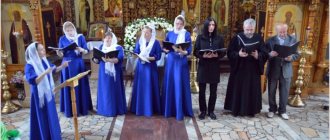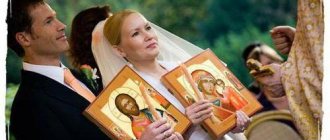Part I. Sources of Church Law
Material sources Divine law The Church as the source of its law Divine law and ecclesiastical legislation Canons Private ecclesiastical legislation Statuary law Custom Opinions of authoritative canonists Hierarchy of legal norms State legislation on ecclesiastical affairs
Holy Scripture as a source of church law Canon of Holy Books Church authority of Old Testament legal norms New Testament as a source of church law Apostolic Scriptures as a source of church law Holy Scripture and canons
Sources of church law of the ante-Nicene era Law of the ancient Church The most ancient monuments of church law “Apostolic Constitutions” “Rules of the Holy Apostles” Rules of the Holy Fathers of the ante-Nicene era
Greek sources of church law from the era of ecumenical councils Rules of the First Council of Nicaea Rules of the Second Ecumenical Council Rules of the Council of Ephesus IV Ecumenical Council 451 Rules of the Council of Trullo II Council of Nicaea Rules of Local Councils Rules of the Holy Fathers
Codification of Byzantine church legal sources in the era of ecumenical councils Canonical collections Roman-Byzantine law Collections of state laws on church affairs “Nomocanons”
Western sources and collections of church law from the era of ecumenical councils Canons of Western origin Decretals Western canonical collections of the IV-VI centuries. Western canonical collections of the 7th-9th centuries.
Sources of church law of Byzantium of the X-XV centuries Resolutions of Councils, Patriarchs and Bishops. Imperial laws. Interpretations of the canons. Aristin. Zonara. Valsamon. Byzantine church law of the 14th century
Ecclesiastical legal sources of the Balkan churches The first Slavic translations of the Byzantine “Nomocanons” “The Helmsman’s Book” of St. Sava of Serbia “The Helmsman’s Book” in Russia “The Nomocanon at the Great Trebnik” Medieval sources of the Romanian Church
Sources of law of the Russian Church before the establishment of the Holy Synod Sources of Byzantine origin Russian sources of church law of conciliar and hierarchical origin (until the mid-15th century) Sources of church law of state origin Sources of Russian church law from the mid-15th century to the establishment of the Patriarchate
Sources of church law of the synodal and modern era. Relationships between the Church and the state in the synodal era. “Spiritual Regulations” Sources of church law of the synodal era Sources of church law of the newest era Hierarchy of legal sources
Sources of church law in the West Sources of law of the Catholic Church Medieval Catholic collections of canon law “Code” of the Catholic Church. Legal sources of Protestant churches
Part II. Composition and structure of the Church
Joining the church. Composition of the Church Members of the Church Sacrament of Baptism Joining the Church Loss of ecclesiastical legal capacity Composition of the Church
Hierarchy. Ordination High and low clergy Election to sacred degrees Ordination
Sacred and governmental hierarchies Sacred hierarchy Governmental hierarchy of the episcopal degree Governmental hierarchy of the presbyterate and deaconate degrees Difference between the degrees of the priesthood and the degree of the governmental hierarchy Degrees of the governmental hierarchy and ecclesiastical offices
Clergymen Ordination of clergymen Degrees of clergymen
Requirements for a candidate for the priesthood Obstacles to ordination Incapacity for the priesthood Types of obstacles Physical obstacles Spiritual obstacles Social obstacles Tests of candidates
Rights and responsibilities of clerics Rights and privileges of clerics Responsibilities of clerics
Monasticism. Monasteries Origin and essence of monasticism Monastic vows Monasteries and monasticism in Russia
Canon law
| Archpriest Vladislav Tsypin. Canon law. - M.: Sretensky Monastery Publishing House, 2009. - 864 p. |
This publication represents a fundamental work on the ecclesiastical canon law of the Russian Orthodox Church from its origins - Roman and Old Testament law, the rules of the Ecumenical and Domestic Councils - and to the Statute of the Russian Orthodox Church of the present time, as well as the canon law of the Catholic and Protestant Churches.
The book also contains sections on the basic principles of the relationship of the Russian Church with the Russian state and non-Orthodox Churches. The proposed publication is intended for clergy, students of theological educational institutions, and lawyers and will be of interest to a wide range of Orthodox readers.
- 2.1. Divine right
- 3.1. The connection between church law and Old Testament and Roman law
- 4.1. Name of discipline: canon and ecclesiastical law
- 5. Holy Scripture as a source of church law 5.1. Canon of Holy Books
- 6.1. Law of the Ancient Church
- 7.1. Rules of the First Ecumenical Council
- 8.1. Canons of Western origin
- 9.1. Classification of legislative collections
- 10.1. Western canonical collections of the 4th–6th centuries.
- 11.1. Resolutions of Councils, Patriarchs and Bishops
- 12.1. Collections from the era of the Ottoman yoke
- 13.1. The first Slavic translations of the Byzantine Nomocanons
- 14.1. Sources of Byzantine origin
- 15.1. The relationship between Church and state in the synodal era
- 16.1. Acts of the Local Council of 1917–1918.
- 17. Composition of the Church 17.1. Head and members of the Church
- 18.1. Sacrament of Baptism
- 19.1. High and low clerics
- 20.1. Incapacity for the priesthood
- 21.1. Government hierarchy of the episcopal degree
- 22.1. Consecration of clergy
- 23.1. Responsibilities of Clerics
- 24.1. Origin and essence of monasticism
- 25. Supreme authority in the Church 25.1. Catholicity of the Church
- 26.1. Territorial principle of ecclesiastical jurisdiction
- 27.1. Ancient autocephalous metropolises
- 28.1. Historical sketch
- 29.1. Canonical principles of the structure of higher governance in Local Churches
- 30.1. Pre-synodal period
- 31.1. Local Council
- 32.1. Church of Constantinople
- 33.1. Self-Governing Churches
- 34.1. Diocese
- 35.1. Ruling and suffragan bishops. Diocesan administration according to the current Statute of the Russian Orthodox Church
- 36.1. Historical sketch
- 37.1. Formation of parishes
- 38.1. Parishes in the pre-Synodal and Synodal periods
- 39.1. Coming
- 40. Essence and types of church authority 40.1. The nature of church power and its difference from secular power
- 41.1. Creed and other authoritative statements of faith
- 42.1. Divine service
- 43.1. Parting words for the dying
- 44.1. Canonization of saints in the Orthodox Church
- 45.1. Bearers of legislative power in the Church
- 46.1. Church administration
- 47.1. Ecclesiological foundations of ecclesiastical court
- 48.1. Punishments for the laity
- 49. Sacrament of marriage 49.1. Definition of marriage
- 50.1. Marriage in the Ancient Church
- 51.1. Types of obstacles
- 52.1. Mutual responsibilities of spouses
- 53.1. Canonical grounds for divorce
- 54. Property rights of the Church 54.1. Doctrines on the Ownership of Church Property
- 55.1. Sacred and ecclesiastical objects
- 56.1. Canonical principles regulating the maintenance of the clergy
- 57. Orthodox Church and heterodox churches 57.1. Canons on heresies and schisms
- 58.1. Religious statistics
- 59. Orthodox teaching on the state 59.1. Nature of the State
- 60.1. The Church is outlawed
- 61.1. Church and state in the pre-Petrine era
- 62.1. Constitutional status of the Russian Orthodox Church
- 63.1. Canonical norms of relations between Church and state
- 1. Sources of law of the Catholic and Protestant churches 1.1. Features of legislation and sources of law of the Catholic Church
- 2.1. Status of the Roman Catholic Church
Part III. Church governing bodies
Highest authority in the Church
The catholicity of the Church The highest authority in the Church Ecumenical Councils Criticism of the Catholic teaching on supremacy in the Church Caesaropapism and its criticism
Church and territory. Church diaspora. Autocephalous and autonomous churches. Territorial principle of ecclesiastical jurisdiction Diaspora Autonomous Churches
Local churches and senior management in them Formation of local Churches Exarchates. Formation of Patriarchates New autocephalous Churches. Diptychs The structure of the higher administration of local Churches The highest administration in the Patriarchates. Equality of Local Churches
The highest administration of the Russian Church until the end of the 17th century The Russian Church as part of the Patriarchate of Constantinople The Russian Church from the beginning of autocephaly to the establishment of the Patriarchate The Russian Church in the era of the Patriarchate
The highest administration of the Russian Church in the synodal era. Establishment of the Holy Synod. Changes in the composition of the Synod Chief Prosecutors of the Holy Synod Synodal institutions Projects for the transformation of the highest administration of the Russian Orthodox Church
The highest administration of the Russian Orthodox Church in the period 1917-1988. Local Council 1917-1918 Establishment of the Patriarchate, Determinations of the Local Council of 1917-1918. on the bodies of the highest church administration Higher church administration in the period from 1918 to 1945 Local Council of 1945 and the Regulations on the administration of the Russian Church
The highest administration of the Russian Orthodox Church according to the current charter of June 9, 1988. The Local Council of 1988 and the Charter adopted by it on the management of the Russian Orthodox Church. The Local and Bishops' Councils. The Patriarch. The Holy Synod and synodal institutions.
The structure of the supreme government of Orthodox local churches Serbian Orthodox Church Romanian Orthodox Church Bulgarian Orthodox Church Greek Church Comparative characteristics of the structure of the supreme power of autocephalous Orthodox Churches
The highest administration of the Roman Catholic Church Pope Synod of Bishops Cardinals Legates Orthodox canonical assessment of the system of government of the Catholic Church
Diocesan administration Canonical foundations Diocese Diocesan bishop and his election Bodies of diocesan administration
Diocesan administration in the Russian Orthodox Church (historical outline) Diocesan administration before the establishment of the Holy Synod Diocesan administration in the synodal era Diocesan administration according to the definitions of the Local Council of 1917-1918. Diocesan administration according to the Regulations “On the Administration of the Russian Orthodox Church” 1945
Diocesan administration according to the “Charter ...” of 1988. Exarchates. Bodies of diocesan administration Deanery Exarchates
Parish (canonical basis) Formation of parishes Appointment of a parish priest Responsibilities of parish clergy
Parish in the Russian Orthodox Church. Parishes in the pre-synodal era Parishes in the synodal era Parish charter of the Local Council of 1917-1918. Parish administration according to the “Regulations on the management...” of the Local Council of 1945. Parish administration according to the “Charter on the management...” of 1988.
CANON LAW
CANONIC LAW (jus canonicum), body of law. provisions (principles and norms) established in accordance with Christian canons. The Code regulates issues of the structure of the Church, the relationship of its members, church offenses, legal proceedings, management of church property, the relationship of the Church with the state and other societies. structures, as well as marital and family relations.
In zap. legal Literary sometimes the concepts of “K. P." and “ecclesiastical law” (jus ecclesiasticum). In the Orthodox East, in particular in Rus. Orthodox Church, in church documents, educational activities, and everyday life, these concepts are used synonymously.
The Church received from Christ Himself the rule of faith and fundamental principles. the laws of life by faith (commandments), therefore she derives her law from Divine Revelation; Other rules (canons) were issued by the Church itself, with the authority that Christ entrusted to it. Thus, the sources of Catholicism are the texts of the Holy Scriptures, church customs, decrees of Ecumenical Councils and Local Councils, the works of the Fathers of the Church, and in the Roman Catholic Church. churches - also papal decretals. Even in the ancient Church, for ease of use, canons began to be combined into collections. In the 6th century. The collection of Dionysius the Less enjoyed the greatest authority. Early collections of canons were arranged chronologically. type. The most ancient surviving code with the systematization of canons by subject - “Synagogue in 50 titles” - belongs to the Patriarch of Constantinople John III Scholasticus (6th century).
The Ecumenical Orthodox Church uses canonical corpus (collection of canons), developed during the era of the Ecumenical Councils and formalized by 883, when the edition of the “Nomocanon in 14 titles” by the Patriarch of Constantinople, St. Photia. Part 2 of the “Nomocanon...” - “Syntagma of the canons” includes all the canons. The use in the Church of this ancient body does not mean that all ecclesiastical legal norms established in accordance with it are or should be in force at any time and in any place. So, for example, the discipline of punishments developed by Ch. arr. in the 4th century, in practice it was thoroughly reformed already in the early Byzantine era, when non-canonical ones began to be used when assigning penances. terms of excommunication from communion, and those proposed in the penitential Nomocanon of Patriarch John the Faster of Constantinople (6th century), which contains incomparably milder sanctions. The 37th Apostolic Canon provides that the bishops of each region gather for a council 2 times a year, and in the 8th canon of the Trullo Council, the fathers, citing barbarian raids and other random obstacles, introduced a new norm - to convene councils once a year, however this does not mean the abolition of the 37th Apostolic Canon: the convening of a council twice a year is still considered as a desirable establishment, but in view of the difficulties that have arisen, a new order is being introduced. That is, the fundamental ecclesiological idea of the 37th Apostolic Canon and the 8th Canon of the Trullo Council is conciliarity, and the specific frequency of convening councils can be established taking into account the circumstances of their time.
Church rule-making based on the canons did not stop after 883, but the acts issued in the department. local Orthodox churches or diocesan bishops do not have church-wide authority.
Extensive interpretations on the full composition of the canonical books. the buildings were created in the 11th–12th centuries. Byzantine canonists Aristin, Zonara, Balsamon; in the 14th century the alphabetical syntagma was compiled by Vlastar; at the turn of the 18th–19th centuries. the canon came out. collection of interpretations "Pidalion". In Rus', the texts of the canons were known from the Helmsman's Book. In 1839, the Book of Rules was published in Russia.
The Roman Catholic Church, in addition to the ancient canons, includes in its canon. body of rules developed by later councils, recognized as Ecumenical in Catholicism, as well as the rule-making of Rome. popes (see Pope) and Rome. curia. In the West, the most famous was the subject collection of canons “Decree”, compiled c. 1012 ep. Burchard of Worms. In con. 11th century During the reforms of Pope Gregory VII (Gregorian Reform), new sources of religious law were introduced - the decretals of Rome. popes, as a result in the Roman Catholic. The church developed a special system of law called “new law” (jus novum). In addition to biblical and patristic institutions, there is a noticeable influence of Roman law (especially in matters of property, inheritance and contracts) and common law (issues of protection of honor, observance of oaths, retribution, reconciliation and collective responsibility). In 1093–95, the three most important compendiums of K. p. - "Tripartita", "Decretum" and "Panormia" - were compiled by Ivo, bishop. Chartres. OK. 1140 was compiled Sat. “Coordination of discordant canons” (“Concordia discordantium canonum”), called. "Gratian's Decree" (see Gratian's Decree 1140). Rule-making Rome. popes were united in collections of decretals under the name. "Extravagantes" K con. 16th century under the influence of the reforms of the Council of Trent, the collection of decretals and the “Decree of Gratian” compiled the Code of Canonicals. rights (Corpus juris canonici), which became the basis. the source of K. p. in the West in modern times. The Code of Canon Law, created in 1917, replaced all previous codifications and gave the canon law a rationally ordered structure and presentation. The reforms of Vatican II laid the foundations for the new Code (1983), which has a strong legal basis. and theological basis. In 1990 in the Roman Catholic. Church adopted the Code of Canons of the Eastern Churches, which extends its effect to Eastern Catholics. rituals (see Uniatism).
C. p. has its own system, which regulates: the composition and structure of the Church (entry into the Church, hierarchy, ordinations, composition of the clergy, the rights and duties of clergy, monasticism), church government bodies (the highest authority in the Church, church jurisdiction, diaspora, statuses autocephalous, autonomous churches, dioceses and parishes), types of church authority (educational, sacred, governmental), attitude towards other confessions and the state.
In contrast to the state and public law of any people, which is socially conditioned and undergoes changes, the basis of civil law, which relates to internal law. life of the Church remains unchanged (the composition of the Church, the hierarchy of the priesthood, ordinations, the performance of church sacraments). Norms regulating the relations of the Church as one of the societies. alliances with other companies. formations, primarily with the state, may change. So, to Rome. empire after the Edict of Milan (313), when Christianity was identified with the state. interests, and church rules were given the power of state. laws, sacred law (jus sacrum) was part of the public, state. rights (jus publicum). K. p. regulated part of the citizens. legal relations, for example marriage and family legal relations (marriages, registration of births, marriages, deaths). In modern and contemporary times, as a result of secularization, the circle of these legal relations narrowed.
Coercive law, like secular law, is characterized by a coercive nature. However, unlike secular law, the basis of civil law is not state law. coercion, but an appeal to the inner spiritual world of the violator of church canons, prompting him to repentance.
The science of the canons and the doctrine of religion itself—canonology—studies the methodology, axiology, dogmatics, and history of the religion of religion. It has had a great influence on the dogmatics and methodology of the religion of religion since the 11th century. provided by jurists who studied Roman law, especially commentators on the Digest. They contributed to the rise of the authority of the cultural movement, adapting it to the needs of contemporary society. Basic legal commentary method. texts were the compilation of glosses, textbooks of K. p. in the form of sums, as well as research by the department. problems. The closest connection between the science of civil law and civil law existed (more precisely, with secular law). In the scientific and teaching communities, the title “doctor of two rights” arose, meaning a doctor of both canon and civil law. The oldest centers for the study of computer science in the West, starting from the Middle Ages, were the University of Bologna, as well as the departments of computer science in Paris, Pavia, Orleans, Toulouse, Montpellier, and later in Prague and Krakow (Jagiellonian University).
Part IV. Types of Church Authority
The Authority of Doctrine Three Types of Church Authority The Authority of Doctrine Missionary Creed and Other Authoritative Statements of Faith Spiritual Censorship
The power of sacred rites Divine service Temple and iconography Church calendar
Christian death. Veneration of the saints. Burial of the dead Canonization and veneration of saints
The sacrament of marriage Marriage in the Ancient Church Marriage in Byzantium Marriage in the Russian Church
Obstacles to marriage Types of obstacles Absolute obstacles to marriage Conditional obstacles to marriage
Consequences of marriage Mutual responsibilities of spouses Mutual rights and responsibilities of parents and children
Divorce Canonical grounds for divorce Divorce Divorce in Russia
Governmental power of the Church. Church legislation. Legislative ecclesiastical authority Application of ecclesiastical laws and their binding force
Church governance and supervision. Disposition of church property. Church administration Supervision Property rights of the Church Maintenance of the clergy Disposal of church property
Church court Court in the Ancient Church Church court in Byzantium Church court in Ancient Russia Church court in the synodal era Church court in the modern period of the history of the Russian Orthodox Church Church judicial authorities
Church punishments Punishments for the laity Church punishments for clergy






